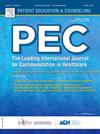Examining the impact of identity-safety cues on inclusion for adults with higher body weights in healthcare settings
IF 2.9
2区 医学
Q2 PUBLIC, ENVIRONMENTAL & OCCUPATIONAL HEALTH
引用次数: 0
Abstract
Objectives
Adults with higher body weights experience weight stigma in healthcare, which can heighten concerns about treatment in these settings. This study investigates whether a specific strategy—using an identity-safety cue, or a cue which signals that one’s social identity is valued—mitigates these concerns.
Methods
527 U.S. adults who self-identified as overweight were randomized to read about a hypothetical physician who endorsed a weight-inclusive clinical approach (identity-safety cue condition) or making health information accessible (control condition). Next, participants read a vignette where the physician attributed their persistent knee pain to their age (control diagnosis), lifestyle habits (ambiguous diagnosis), or body weight (stigmatizing diagnosis).
Results
Exposure to the physician who employed the identity-safety (versus control) cue decreased weight stigma concerns, increased perceptions of physician allyship, and promoted identity-safety. While use of the identity-safety cue elicited benefits regardless of the physician’s clinical diagnosis, viewing the identity-safety cue alongside the stigmatizing diagnosis increased perceptions that the physician’s commitment to diversity was dishonest, which subsequently harmed feelings of safety.
Conclusions
Use of identity-safety cues in healthcare can effectively promote inclusion for adults with higher body weights. However, perceiving that the physician’s pro-diversity efforts are dishonest can undermine inclusion.
Practice implications
To effectively promote inclusion for adults with higher body weights, physicians should employ cues which explicitly signal that their weight identity is valued.
求助全文
约1分钟内获得全文
求助全文
来源期刊

Patient Education and Counseling
医学-公共卫生、环境卫生与职业卫生
CiteScore
5.60
自引率
11.40%
发文量
384
审稿时长
46 days
期刊介绍:
Patient Education and Counseling is an interdisciplinary, international journal for patient education and health promotion researchers, managers and clinicians. The journal seeks to explore and elucidate the educational, counseling and communication models in health care. Its aim is to provide a forum for fundamental as well as applied research, and to promote the study of organizational issues involved with the delivery of patient education, counseling, health promotion services and training models in improving communication between providers and patients.
 求助内容:
求助内容: 应助结果提醒方式:
应助结果提醒方式:


